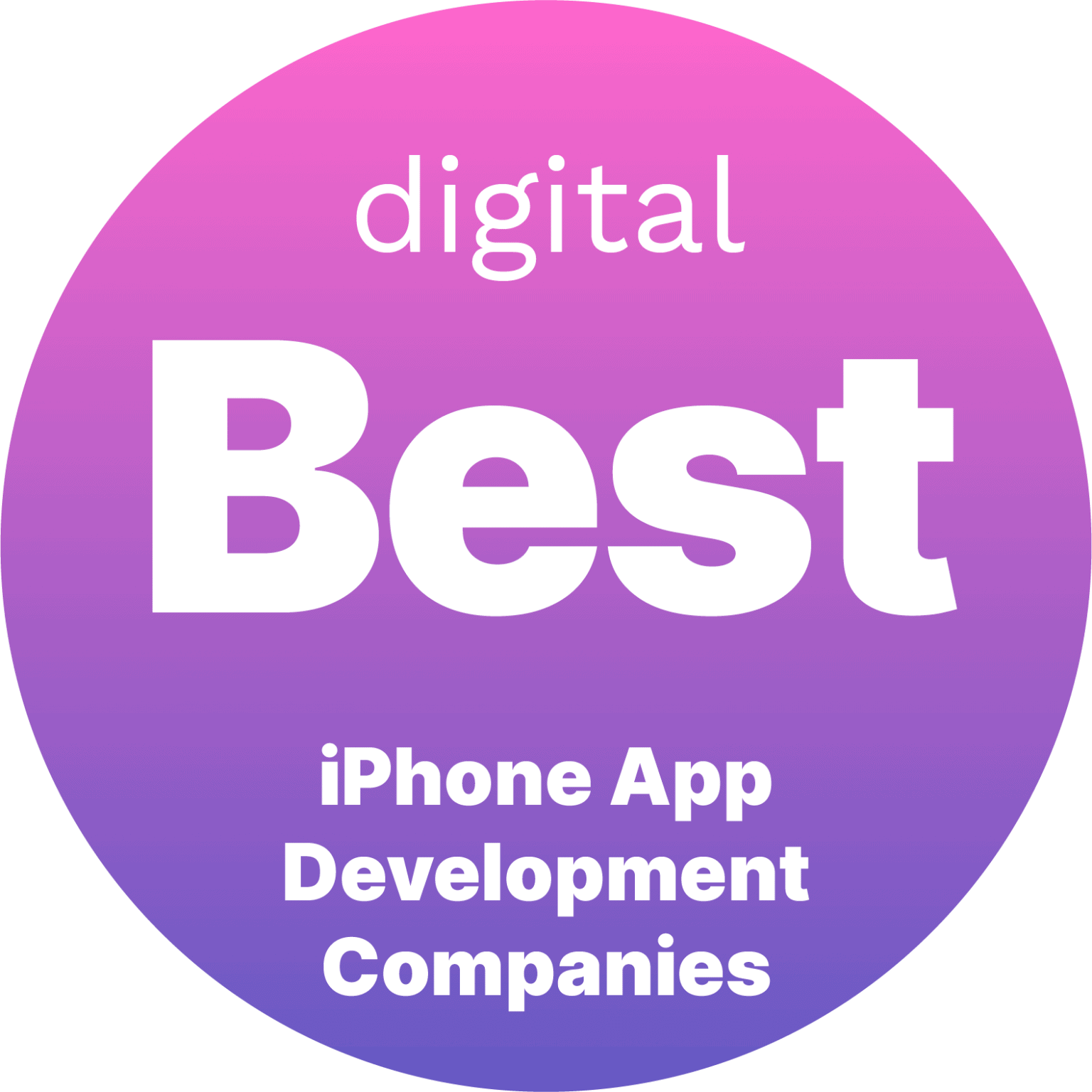Key Takeaways:
- Skipping market research and validation is a recipe for failure – lack of real user need is the #1 reason startups flop. We ensure you validate demand before writing a single line of code.
- Overbuilding your app with too many features wastes time and money. Starting with a focused Minimum Viable Product (MVP) lets you launch faster, gather feedback, and iterate cost-effectively.
- Ignoring user experience or marketing can doom even a great idea. A seamless UI/UX and a solid launch plan are essential for retaining users and gaining traction.

Launching your first mobile app is an exciting journey – but it’s also full of potential pitfalls. As a first-time founder, you’re likely brimming with ideas and optimism. However, the hard truth is that most apps don’t succeed in the market. Research shows that an estimated 90% of startups ultimately fail, with nearly 42% of failures attributed to building a product with no market need. In the ultra-competitive app ecosystem, what you don’t know can hurt you.
At Dogtown Media, we’ve collaborated with hundreds of app entrepreneurs and seen firsthand which missteps can make a promising app idea unravel. The good news is that these mistakes are avoidable. By learning from others’ experiences and approaching development with the right strategy, you can dramatically improve your app’s odds of success. Below, we break down the top five mistakes first-time app founders make – and how to avoid them (with a little help from our team).
Mistake #1: Skipping Market Research and Idea Validation
The Pitfall: Many new founders dive straight into development based on a “eureka” idea, assuming their app will naturally attract users. In reality, failing to validate that there’s real demand for your concept is one of the costliest mistakes you can make. The sobering fact is that “no market need” is cited in 42% of startup failures. In other words, nearly half of failed startups built something that people didn’t actually want. If you skip market research, you risk pouring time and money into an app that solves no compelling problem for a viable audience.
First-time founders often get caught in the passion of their idea and assume everyone will love it. But without data, this is just guessing – and guessing wrong can be fatal. You might be targeting the wrong customer, building features for a market that’s too small, or creating a product already offered by a dozen competitors. As one industry analysis put it, lack of market need (or awareness) is the top reason startups flop. Building an app no one asked for is like launching a solution in search of a problem.
How to Avoid It: Do your homework before you code. Rigorous market research and idea validation are mandatory first steps. This means identifying your target users and confirming they have the problem your app aims to solve. Conduct surveys, interviews, or use tools like Google Trends and forums to gauge interest. Analyze the competition: Is your idea truly unique or better than what’s out there? If similar apps exist, study their downloads, reviews, and features to find gaps or opportunities. It’s also crucial to figure out how you’ll monetize (if revenue is a goal) and what platforms your audience uses most (no point building only for iOS if your users are mostly Android, for example). In short, validate the concept from every angle.
 For instance, before investing a dollar in development, you could create a simple landing page describing your app idea and drive some traffic to it. If nobody signs up for updates or shows interest, that’s a red flag. On the other hand, strong interest or pre-signups can prove demand. Remember, launching an app without market validation is like opening a store in the desert – if no one knows or cares about it, even the best product can flop.
For instance, before investing a dollar in development, you could create a simple landing page describing your app idea and drive some traffic to it. If nobody signs up for updates or shows interest, that’s a red flag. On the other hand, strong interest or pre-signups can prove demand. Remember, launching an app without market validation is like opening a store in the desert – if no one knows or cares about it, even the best product can flop.
At Dogtown Media, we help first-time founders avoid this mistake by guiding them through an in-depth discovery and validation phase. We’ll work with you to research the market, identify user personas, and even build low-cost proofs-of-concept (like prototypes or smoke test campaigns) to make sure your idea resonates. By the end of this phase, you should have concrete evidence that real users need your app – and clarity on how your solution stands out. (For a deeper dive into this process, check out our guide on how to validate your mobile app idea before development.) It’s much better to pivot or refine your concept now than after you’ve spent hundreds of thousands on an app that fizzles. As our own research team likes to say: Measure twice, cut once. Thorough market research upfront will save you immeasurable headache later.
Mistake #2: Trying to Build Too Many Features Out of the Gate
The Pitfall: You have a grand vision for your app – and you want to deliver all of it on day one. Sound familiar? Many first-time founders make the mistake of trying to build a “kitchen sink” product with every feature they can dream up, in an attempt to please everyone. The result is usually costly delays, a blown-up budget, and a bloated app that still misses the mark on core user needs. Overbuilding is a classic rookie error. “Trying to build an all-in-one app from day one often leads to delays and wasted resources,” as industry experts observe. By the time you finish that massive version 1.0 (if you ever do), the market or your users’ needs may have changed – or you’ve run out of money. Plus, a complex first product is harder to test and often overwhelms or confuses early users.
How to Avoid It: Embrace the philosophy of a Minimum Viable Product (MVP). An MVP is the simplest, most bare-bones version of your app that still solves the core problem for your users. Instead of building every nice-to-have feature, identify the one or two features that deliver the primary value. Focus on doing those exceptionally well. Everything else can come later. This approach isn’t about shortchanging your vision – it’s about sequencing it intelligently. By launching with a leaner product, you can get to market faster, start gathering real user feedback, and then iterate.
 There are huge benefits to starting small. Releasing an MVP lets you test assumptions in the real world and pivot or refine based on actual data rather than building in a vacuum. In fact, pursuing an MVP can save an enormous amount of time and money. Consider this: instead of spending a year building ten features only to discover users really only care about two of them, you build the most important feature in a couple of months, launch, and learn. Each development “chunk” (prototype, MVP, etc.) functions to validate your idea, so you don’t waste effort on features that won’t work in the wild. As LinkedIn co-founder Reid Hoffman famously said, “If you are not embarrassed by the first version of your product, you’ve launched too late.” In other words, iterate in public and let your users steer you – don’t hide in the workshop for years trying to craft the “perfect” app from day one.
There are huge benefits to starting small. Releasing an MVP lets you test assumptions in the real world and pivot or refine based on actual data rather than building in a vacuum. In fact, pursuing an MVP can save an enormous amount of time and money. Consider this: instead of spending a year building ten features only to discover users really only care about two of them, you build the most important feature in a couple of months, launch, and learn. Each development “chunk” (prototype, MVP, etc.) functions to validate your idea, so you don’t waste effort on features that won’t work in the wild. As LinkedIn co-founder Reid Hoffman famously said, “If you are not embarrassed by the first version of your product, you’ve launched too late.” In other words, iterate in public and let your users steer you – don’t hide in the workshop for years trying to craft the “perfect” app from day one.
Practically, this means defining clear priorities. Ask yourself: Which feature is the game-changer? What’s the main problem I’m solving? Build that first. You can even release your app to a small group of beta users or in a single geographic area to test the waters. Early adopters are usually forgiving of minimal feature sets if the core value is strong. You can then add features gradually in subsequent updates once you know what users actually want next. This agile, MVP-driven approach is a hallmark of successful startups. It not only speeds up development but also lowers costs – you’re not sinking resources into features that end up on the chopping block.
We always encourage the founders we work with to start lean. In fact, as an experienced development partner, Dogtown Media will help you distill your app to an effective MVP for launch. We’ll collaborate to identify the must-have functionality versus the “nice-to-haves” that can wait. By staggering development into manageable phases, you can show stakeholders progress sooner and begin proving the concept in the market. This methodical rollout ensures you concentrate on features backed by data and user feedback, which ultimately leads to a stronger product and a healthier bottom line. Remember: you can always add more features later – but if you run out of runway, you might never get the chance. Stay focused and keep it simple to start.
Mistake #3: Underestimating Development Costs and Timelines
The Pitfall: “It can’t be that expensive or time-consuming to make an app, right?” – Famous last words of many first-time founders. One of the most prevalent mistakes is severely underestimating what it takes to build and launch a quality mobile app. Too often, entrepreneurs budget for a quick, cheap development cycle only to discover that real life is far more complex. The truth is that developing a custom mobile app is a significant investment – in both time and money. For perspective, industry data shows the average cost of developing a mobile app ranges from about $80,000 to $250,000 (USD) for a professional product. Even a relatively “basic” app can easily cost tens of thousands once you account for design, development, testing, and deployment infrastructure. Yet many first-timers start with unrealistic budgets (say $5k or $10k) and then get stuck or disappointed when quotes come back an order of magnitude higher.
Time is the other side of the coin. Quality software doesn’t materialize overnight. On average, it takes 3 to 6 months to develop a mobile application to a launch-ready state. More complex apps (with rich features, multiple platforms, backend servers, etc.) can take 8–12 months or more. And that’s just for the initial version – it doesn’t include ongoing updates (which we’ll touch on later). Founders who assume they can go from idea to App Store in a few weeks are almost always in for a rude awakening. Underestimating timelines often leads to missed launch windows, blown marketing plans, and frustration all around. Underestimating costs can be even more dangerous – you might run out of money halfway through development, resulting in a half-finished product or major quality compromises. In fact, a flawed budget and timeline in your business plan can have a ripple effect on your entire startup, derailing operations and growth.
Several factors contribute to this underestimation. Non-technical founders may not grasp all the steps required – from initial wireframing and design, to front-end and back-end coding, integration of third-party APIs, rigorous testing on multiple devices, fixing bugs, and then navigating app store approvals. Each of these stages takes expertise and time. Additionally, custom features (like complex algorithms, AI capabilities, real-time syncing, etc.) can significantly increase scope. It’s easy to fall into the trap of “just one more feature” adding weeks or months of work. And let’s not forget: if you want your app on both iOS and Android, that can double the effort (unless you use cross-platform tech, which has its own trade-offs).
How to Avoid It: Go in with eyes wide open and a solid plan. Start by educating yourself on what app development typically entails. Talk to experts or firms (many offer a free consultation to scope your project). Get detailed estimates for both time and cost before you start writing checks or setting deadlines. This should include a breakdown of design, development, testing, and project management hours. A trustworthy development partner will help you understand the true effort required and won’t just tell you what you want to hear. Be wary of unrealistically low bids – if it sounds too good (fast/cheap) to be true, it probably is. Many founders have gone with the cheapest quote only to pay dearly later when the project stalls or the code quality causes endless delays.
When planning, always build in a buffer for the unexpected. Software projects can encounter surprises – maybe a third-party service changes its API, or you realize a feature behaves differently in the wild and needs rework. It’s prudent to add maybe 15–20% contingency on both budget and timeline. Also, prioritize features (as discussed in the MVP section) so that if you do start running tight, you can cut lower-priority tasks rather than jeopardizing the whole project.
Another key is to plan your development in phases. Perhaps phase 1 is the core app for one platform, phase 2 is additional features or the second platform, etc. This phased approach lets you allocate budget and time more flexibly. You might, for example, launch iOS first to start generating traction (or revenue) while still working on Android for phase 2, thereby spreading out costs.
At Dogtown Media, we place a heavy emphasis on accurate project scoping and transparent budgeting from day one. Our team will help you map out the entire development roadmap – from initial design sprints to final polish – and give you realistic timeline estimates for each milestone. We draw on experience from launching 100+ apps to foresee common pitfalls and ensure nothing critical is overlooked in the budget. By working with seasoned professionals, you gain clarity on what resources you truly need to bring your vision to life. This not only prevents unpleasant surprises, but also helps you secure adequate funding. Your app is a business venture – treat its budgeting and scheduling with the same rigor you would any major capital project. With proper planning (and a bit of patience), you’ll set your product up for success rather than setting yourself up for stress.
Mistake #4: Neglecting User Experience (UX) and App Quality
The Pitfall: In the rush to ship an app, first-time founders sometimes focus solely on functionality and features, while overlooking the importance of user experience and quality assurance. This is a critical mistake: even if your app idea is brilliant, a poor UX or buggy performance can undermine everything. Users today have zero patience for apps that are confusing, slow, or crash-prone – there are plenty of alternatives just a tap away. Consider that even if you manage to get people to download your app, about 23% of users will abandon it after a single use. That’s nearly one in four users who open your app once and never come back, often because the first impression was frustrating or underwhelming. Issues like unintuitive navigation, cluttered interfaces, long load times, or frequent bugs can drive your hard-won users straight into the arms of a competitor. Simply put, “UX can make or break an app”. If you get it wrong, you might end up spending a fortune acquiring downloads that never turn into active users or revenue.
In our experience, new founders sometimes skimp on professional design or testing to save costs, or they assume that as long as the app “works”, that’s good enough. But working isn’t enough – it needs to delight. The bar for user experience in mobile apps is extremely high in 2025. Giant companies have trained users to expect slick, seamless interfaces and near-flawless performance. If your app feels clunky or half-baked, users will bail out quickly (and probably leave a bad review on their way out). And those bad reviews will further sink your app’s chances of discovery. It becomes a vicious cycle. On the flip side, a well-designed app with smooth UX will engage users longer, encourage positive ratings, and set you up for organic growth. As one Dogtown Media design expert bluntly puts it, “At this point, a seamless UI and UX is the minimum needed for mobile app success. Don’t disappoint users who download your app – design your mobile app right the first time.” In the app economy, design is king and quality is non-negotiable.
How to Avoid It: Make user experience a top priority from day one. This means investing in good UI/UX design – either by hiring an experienced designer or working with a development agency that has a strong design team. A great designer will ensure your app is not just functional, but intuitive and enjoyable to use. Key principles include: simple and consistent navigation, clear visual hierarchy (so users aren’t overwhelmed), attractive graphics aligned with your brand, and thoughtful interactions (like useful onboarding tutorials, helpful error messages, and little “delighters” in the interface). Essentially, you want to minimize the cognitive load on users – the app should feel natural. It’s wise to create wireframes and interactive prototypes of your app screens early on, and do some user testing even with a small group. Observing real people trying to use your prototype can reveal pain points you never considered. Fixing a confusing flow on paper or in a prototype is infinitely easier (and cheaper) than fixing it after you’ve coded the whole app.
Quality assurance (QA) is the twin sibling of good UX. You must test your app thoroughly on multiple devices and scenarios before launch. That includes functional testing (do all features work as intended?), performance testing (does it load quickly and run smoothly under load?), and usability testing (are the interactions clear and working for users?). Don’t fall into the trap of thinking “users will report bugs and we’ll fix them later” – by the time they do (if they bother), you’ve likely already lost those users. Aim for a polished, stable product at launch. Of course, no app is ever 100% bug-free, but you should squash all high-priority bugs and anything that significantly affects user experience. Also, plan for a soft launch or beta period if possible, where a limited audience can try the app and you can gather feedback in a controlled way.
For non-technical founders, securing the right expertise is crucial. This is where partnering with a professional UI/UX team or agency pays dividends. At Dogtown Media, for example, we’ve built an in-house design and usability team that lives and breathes mobile UX. We involve our designers early in the project to craft wireframes and mockups that align with best practices and modern aesthetics. Our clients often participate in design reviews where we iterate on feedback – ensuring the app’s look and feel resonates with the target audience. We also conduct rigorous QA testing on real devices (phones, tablets, different OS versions) to catch issues before users do. By having seasoned developers and QA engineers on the project, we make sure that what gets launched is a high-quality app that “wows” users from the first tap. The result? Higher user satisfaction, better retention, and positive reviews – which all feed back into your app’s success.
Remember, you typically get one chance to make a first impression. Especially as a new unknown app, you can’t afford a bad one. Investing in user experience and quality is investing in your app’s long-term viability. Don’t consider it optional or something to “add later.” Bake it into your development process. When you prioritize your users’ experience, they’ll reward you with loyalty – and nothing is more valuable to a budding app than loyal, happy users.
Mistake #5: Launching Without a Marketing Strategy (If You Build It, They Won’t Just Come)
The Pitfall: “Our app is awesome – people will find it on their own.” Thinking like this has led many first-time founders to a rude awakening on launch day, when their shiny new app sits in the app store with no downloads. The “build it and they will come” mindset is a major mistake. With over 4 to 5 million mobile apps available across Apple’s App Store and Google Play (and thousands more added each day), the mobile app ecosystem is fiercely competitive. Simply building a great app is not enough – you have to actively promote it, or it will drown in the sea of apps. In fact, one study found that two-thirds of mobile apps fail to reach even 1,000 downloads in their first year. It’s very possible to have a fantastic app that nonetheless flops commercially because nobody knows about it. Lack of user acquisition is a silent killer. Many founders pour all their energy (and budget) into development, launching with no marketing plan, and then scramble when they realize adoption isn’t happening. By then, it can be too late to gain momentum.
This mistake is especially common among product-focused entrepreneurs – they assume that a great product will magically sell itself through word of mouth. While organic virality does happen for a lucky few, hope is not a strategy. The reality is, for the vast majority of apps, you need a concerted marketing and user acquisition effort to get on users’ radar. Launching an app without marketing is like opening a store in the middle of nowhere – if no one knows it exists, you won’t get customers. The first days and weeks after launch are critical; you want to accumulate downloads and reviews to appease the app store algorithms and climb rankings. Without a pre-planned push, your app could languish in obscurity. Moreover, marketing isn’t just about ads or social media blasts – it starts even earlier with app store optimization (ASO), press outreach, beta user engagement, and more. Skipping these steps is a huge missed opportunity.
How to Avoid It: Treat your app launch like the product launch it is – with a proper marketing strategy and budget. Long before your app is ready, you should be thinking about how to create buzz and attract your target users. Here are some key components of a successful app marketing plan:
- Start Early (Pre-Launch Marketing): Don’t wait until after development to think about marketing. Some of the most successful apps build an audience before the app is live. This can include creating a simple landing page or teaser website for your app where people can learn about it and sign up for updates. Encourage visitors to leave their email so you have a list of interested users to notify on launch day. You can also use this page to showcase a promo video or screenshots as they become available. Starting 4–8 weeks before launch to build hype is a common approach – apps that invest in pre-launch outreach have seen significantly higher day-one traction (some studies show 30–85% higher retention on day one for apps with pre-launch campaigns in place).
- Build a Waitlist or Community: Leverage social media and content marketing in advance. Talk about your app in forums, on LinkedIn, or via a dedicated Twitter/Instagram account. You might share development updates or behind-the-scenes looks to pique interest. Consider running a beta test or offering early access to a select group (via TestFlight for iOS or closed beta on Google Play). Early beta users can become evangelists if they love the app. For example, the team behind Robinhood (the stock trading app) famously built a huge waitlist of users before launch by offering a referral program; by launch, they had a million signups eagerly waiting. That kind of buzz doesn’t happen by accident – it’s nurtured.
- App Store Optimization (ASO): This is the art and science of optimizing your app’s listing in the app stores so that it ranks higher in searches and attracts clicks. Long before launch, research the best keywords to target in your app title and description (think about what terms your ideal users might search). Prepare visually appealing screenshots and an icon that stand out. A great app description that highlights your value proposition and includes social proof (like pre-launch accolades or media mentions) can improve conversion. ASO is crucial because roughly 70% of app discovery happens via app store search – you want to ensure you’re not invisible in that channel. (For more advanced strategies on ASO, you might explore our post on App Store Optimization 2.0).
- Launch Day and Beyond: Have a plan to drive traffic and downloads when your app goes live. This could include PR outreach (pitching your app story to tech blogs or local media), targeted online ads (Facebook, Instagram, Google UAC) aimed at your user demographic, and influencer marketing if applicable (sometimes a shout-out or review from a niche influencer can spark interest). If your budget allows, you can also leverage paid acquisition campaigns to boost your initial user base – but do so in a controlled, optimized way to get quality users (not just cheap installs that churn). Monitor your analytics closely from day one (integrate something like Firebase or Mixpanel) so you know where downloads are coming from and how users are behaving, then adjust your marketing tactics accordingly.
- Post-Launch Retention Marketing: Your job isn’t done at launch – it’s just beginning. Plan to engage users through tactics like push notifications, email newsletters, in-app events, or referral incentives to keep them active. Happy users become promoters, so customer support and continuous improvement of the app (via updates) also play into marketing by generating goodwill and positive reviews.
The key takeaway is that you need to budget time and money for marketing with the same seriousness as development. Many experts suggest following the rule of thumb: spend at least as much on marketing as you did on building the app. While that might not always be feasible, it underscores the point that marketing is not optional if you want users.
If marketing isn’t your forte, don’t be afraid to seek help. Dogtown Media often advises our clients on launch strategy as part of our development partnerships. We can help connect you with marketing specialists or guide you on ASO best practices, app store submission timing, and promotional strategies that align with your app’s niche. Our team understands that an app’s success is not just about coding – it’s about getting that app into users’ hands and keeping it there. We’ve even written a detailed guide on pre-launch marketing strategies for mobile apps to help founders navigate this crucial phase. By planning your go-to-market early, you won’t be left scrambling when launch day arrives. Instead, you’ll have an established audience eager to download, an optimized app listing that converts browsers into users, and a post-launch plan to sustain growth. In short, you’ll avoid launching to crickets and give your app the best possible start.
Avoiding these five mistakes won’t guarantee your app’s success, but it will stack the deck heavily in your favor. By researching your market thoroughly, focusing on an MVP, planning realistically, delivering a polished user experience, and executing a smart marketing strategy, you’ll be far ahead of most first-time founders. Building a mobile app startup is hard – but you don’t have to learn all the lessons the hard way. Leverage the experiences of those who came before (including teams like ours who have seen what works and what doesn’t). With careful planning and the right partners, your first app venture can be the start of something amazing, rather than a statistic.
Now, let’s address some frequently asked questions that new app founders often have:
Frequently Asked Questions (FAQ)
Q: How can I tell if my app idea has real market demand before I build it?
A: The best approach is to validate your idea through market research and testing before development. Start by researching if others have the problem your app aims to solve: Are people searching for solutions online? Are there active forum discussions or social media groups around this pain point? Next, look at any existing apps or services addressing similar needs – their presence indicates a market, and their shortcomings can be your opportunity. You can also survey your target audience or conduct interviews to gauge interest.
One effective tactic is creating a simple landing page describing your app idea and collecting email sign-ups – if a significant number of people sign up (or even attempt to pre-order/pay), that’s a strong signal of demand. Additionally, consider releasing a prototype or demo video and gathering feedback. Remember, the goal is to get data that either supports or challenges your assumptions. If the feedback is tepid or users’ needs are different than you thought, you can refine the idea before investing in development. This upfront validation will save you from building something nobody wants. (Related reading: our Dogtown Media blog on idea validation offers a step-by-step guide to this process.)
Q: What exactly is a “Minimum Viable Product” (MVP) and should I build one?
A: A Minimum Viable Product (MVP) is a development approach where you create the most pared-down version of your app that still delivers the core value to users. It includes just the “must-have” features that solve the primary problem, and leaves all “nice-to-have” features for later. The idea is to launch quickly with a smaller feature set, so you can start learning from real users and prove the concept with minimal resources. Yes, in almost all cases first-time founders should start with an MVP. For example, if you envision a marketplace app with 20 possible features, identify the one or two features that are truly central (perhaps user profiles and an item listing/buying function) and focus on those.
By releasing an MVP, you achieve several things: (1) Faster time to market – you can launch in a few months instead of a year; (2) Cost savings – you’re not paying to develop features that might end up unused; and (3) User feedback – you can observe real users interacting with your product and iterate accordingly. An MVP is not a half-baked product; it’s a focused product. Many famous apps started very simply (Instagram began just as a photo-sharing app with filters, Uber started as a basic ride-hailing app just in San Francisco). Starting with an MVP doesn’t limit your ultimate vision – it’s a strategic first step that grounds your product in reality. Once your MVP gains traction, you can gradually add more features based on what users want, effectively growing your app with your user base.
Q: How much should I budget for my first mobile app, and why do estimates vary so much?
A: The cost to develop a mobile app can vary widely depending on complexity, features, and team rates. For a very basic app with a few screens and simple functionality (perhaps an MVP), you might be looking at a budget in the tens of thousands of dollars. More complex apps (multiple features, custom UI design, backend server, etc.) can run into hundreds of thousands. As a broad benchmark, industry surveys in recent years indicate a typical range of $80,000 to $250,000 for a professional app project, though simpler apps can be less and very complex ones more. If you include ongoing costs (updates, cloud services, maintenance), you should plan additional budget (a common recommendation is to allocate ~20% of the initial build cost per year for maintenance).
Estimates vary a lot because of factors like: the region and expertise of your development team (U.S./Europe-based agencies charge more than overseas freelancers, for example), the number of features and supported platforms (building for both iOS and Android natively will cost more than one platform), and specifics like design polish or advanced tech (integrating AI, AR, or high security might raise costs). To get a precise estimate, you should prepare a detailed feature list or product requirements document and consult with development teams. They can break down the effort for each component. It’s wise to get a few quotes, but be cautious – the lowest quote may not always be the best if it compromises quality or omits important pieces (some quotes might not include things like testing or project management which are essential).
At Dogtown Media, we often provide ballpark estimates during a free consultation, and then a more detailed proposal after understanding the project fully. The key is to ensure your budget is realistic for what you want to build. If you find your dream app is too expensive, consider scaling back the initial scope (again, via an MVP approach) to fit your budget, rather than trying to force a champagne-level app on a beer budget. The old adage “you get what you pay for” holds true in app development – investing in experienced talent and proper development will pay off in a more reliable, user-friendly app.
Q: What’s more important: launching quickly or making sure the app is perfect?
A: It’s a balancing act, but generally “done” is better than “perfect” for a first launch – as long as “done” meets a baseline of quality. You shouldn’t release an app that’s sloppy or untested (that can backfire badly), but you also shouldn’t wait indefinitely for perfection. The mobile app landscape rewards those who iterate fast. We advise first-time founders to aim for a strong MVP launch: that means your core features work well, the app is stable, and the user experience is solid for those core features. It won’t have every bell and whistle, and that’s okay.
Once it’s in users’ hands, you’ll inevitably discover areas to improve or new features to add – insights you wouldn’t get if you stayed in development trying to perfect things in a vacuum. Many successful apps went to market with imperfections and then rapidly improved. For example, the first version of Twitter was notorious for frequent crashes, but people loved the core idea and the team fixed issues on the fly. The lesson is to get a viable product out, then refine it based on real feedback. There are cases (like healthcare or fintech apps) where you do need a higher degree of polish and compliance at launch, but even then you should focus on the essentials first. Aiming for perfection can also lead to feature creep (adding more and more in pursuit of “one more thing” to make it perfect) or analysis paralysis that delays your launch past the window of opportunity. So, ensure your app is good and reliable, but don’t over-engineer for edge cases or add features just because you assume you need them. Launch when it’s great in its core functionality, and keep improving after. Users appreciate apps that continuously update – it shows you’re listening and investing in the product. In short, prioritize a timely launch with quality on the basics, rather than a “maybe never” launch striving for flawlessness.
Q: How can a development partner like Dogtown Media help me avoid these first-time founder mistakes?
A: Partnering with an experienced app development firm can significantly de-risk your first app project. At Dogtown Media, we’ve essentially become guides for first-time founders through this challenging journey. Here’s how we help you sidestep the common pitfalls:
- Strategic Planning & Research: We start every project with a thorough discovery phase. Our team assists in researching the market and refining your concept – we’ll ask the hard questions about your target users, competition, and business goals to ensure there’s a solid strategy. If something doesn’t validate, we’ll advise on pivots or tweaks. This upfront diligence means you won’t skip the market research step; on the contrary, you’ll have data-backed confidence moving forward.
- MVP Focus and Scope Management: We know how tempting it is to chase an overly ambitious version 1.0. One of our core values is helping clients define a clear MVP. With our experience, we can quickly distinguish must-have features from nice-to-haves. We’ll work with you to pare down the scope to the optimal feature set for launch, preventing overbuilding. This ensures you launch faster and within budget. Essentially, we keep the project lean and user-focused, so you avoid the feature-bloat trap and save resources.
- Accurate Estimates & Professional Execution: As discussed, underestimating cost or time can be disastrous. Dogtown’s team leverages years of project data to provide realistic estimates and timelines. We break the project into milestones and sprints, giving you transparency into how long each component takes and how much it will cost. Throughout development, our project managers keep everything on track and communicate progress. By having a seasoned partner, you won’t suffer from the common rookie mistake of “it took twice as long (or cost twice as much) as I thought” – we plan properly and set the right expectations. And if unforeseen challenges arise, we have the depth of expertise to solve them efficiently.
- Top-Notch Design and UX: Our in-house designers ensure that user experience is never an afterthought. From crafting intuitive interfaces to conducting usability tests, we bake quality UX into the development process. We can provide complete UI/UX design services – creating wireframes, prototypes, and polished visual designs that align with best practices. This means your app will look and feel professional from day one, avoiding the pitfall of poor UX driving users away. We also perform extensive QA, so you launch with a product that’s stable and user-friendly. In short, we help you deliver a level of app polish that first-time founders would struggle to achieve on their own.
- Launch Support and Iteration: Our relationship doesn’t end the moment the app is coded. We assist with launch preparation, including App Store submission (ensuring you meet guidelines to avoid rejections) and ASO pointers for your app listing. We can advise on marketing strategy or connect you with marketing resources if needed. Because we’ve launched many apps, we can share what works best to get those crucial early users. Post-launch, we remain a partner in analyzing user feedback and planning updates. We encourage an agile, iterative approach – using analytics and feedback to decide on new features or improvements. Essentially, we help you continuously avoid stagnation and missteps even after launch by keeping you responsive to your users and the market.
In summary, Dogtown Media acts as a seasoned co-pilot for first-time app founders. We’ve been through the trenches and will warn you of dangers ahead, whether it’s a technical hurdle or a strategic oversight. By handling the heavy lifting in development and providing mentorship throughout, we free you up to focus on vision and business growth, confident that the execution is in expert hands. Many of our successful client partnerships started with a founder’s passion and our team’s know-how – together we turned an idea into a thriving app, while avoiding the landmines that trip up so many newcomers. Your success is our success, and helping you avoid these common mistakes is a big part of how we achieve it.





